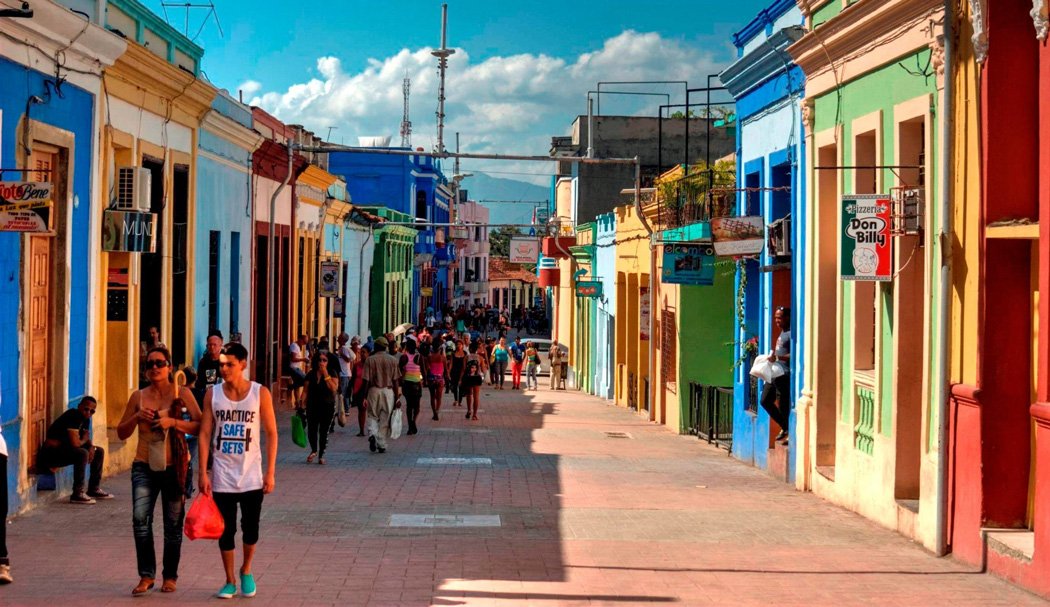.jpeg)
Santiago di Cuba, rivale dell’Avana nella letteratura, nella musica e nella politica, è la seconda città più popolata di Cuba e fu fondata da Diego Velázquez nel 1515.
Ubicata in una incantevole posizione ai piedi della Sierra Maestra, fu capitale fino al 1553.
.jpeg)
Santiago de Cuba si è sempre distinta nella storia di Cuba, a causa del carattere ribelle dei suoi abitanti, tanto da meritare il titolo di ‘capitale della Rivoluzione’.

Il porto ricopre un ruolo rilevante per tutta l’economia nazionale. Il centro nevralgico della città è la Piazza Carlos Manuel de Céspedes, qui si trovano il palazzo dell’Ayuntamiento (municipio), la Casa de Diego Velázquez, la più vecchia casa di tutta Cuba dove viene ospitato il Museo de Ambiente Histórico Cubano, e la Catedral de Nuestra Señora de la Asunción, dove viene ospitato il Museo Eclesiástico.
.jpeg)
Alle spalle della cattedrale si trova il Balcón de Velázquez, da dove è possibile godere della piacevole vista sul porto. Calle Heredia, tra Parque Carlos Manuel de Céspedes e la Catedral de Nuestra Señora de la Asunción, è la via santiaghera più stretta e più famosa della città. Prende il nome dal poeta José María Heredia, la cui casa natale, situata al numero 260, oggi è un museo dedicato all’illustre santiaghero.
.jpeg)
Al numero 303 c’è il Palacio del Museo del Carnaval, memoria storica del carnevale cittadino. Sempre in Calle Heredia c’è la Casa della Trova (Casa Sarcedo). Da vedere anche la Casa del Queso e la Biblioteca Provincial.
Santiago de Cuba, Havana's rival in literature, music and politics, is the second most populous city in Cuba and was founded by Diego Velázquez in 1515.
Located in an enchanting position at the foot of the Sierra Maestra, it was the capital until 1553.
Santiago de Cuba has always stood out in the history of Cuba, due to the rebellious character of its inhabitants, so much so that it deserves the title of 'capital of the Revolution'.
The port plays an important role for the entire national economy. The nerve center of the city is the Plaza Carlos Manuel de Céspedes, here are the palace of the Ayuntamiento (town hall), the Casa de Diego Velázquez, the oldest house in all of Cuba where the Museo de Ambiente Histórico Cubano is housed, and the Catedral de Nuestra Señora de la Asunción, where the Eclesiástico Museum is housed.
Behind the cathedral is the Balcón de Velázquez, from where you can enjoy the pleasant view of the port. Calle Heredia, between Parque Carlos Manuel de Céspedes and the Catedral de Nuestra Señora de la Asunción, is the narrowest and most famous street in the city. It takes its name from the poet José María Heredia, whose birthplace, located at number 260, is now a museum dedicated to the illustrious santiaghero.
At number 303 there is the Palacio del Museo del Carnaval, historical memory of the city carnival. Also on Calle Heredia is the Casa della Trova (Casa Sarcedo). Also worth seeing are the Casa del Queso and the Provincial Library.
